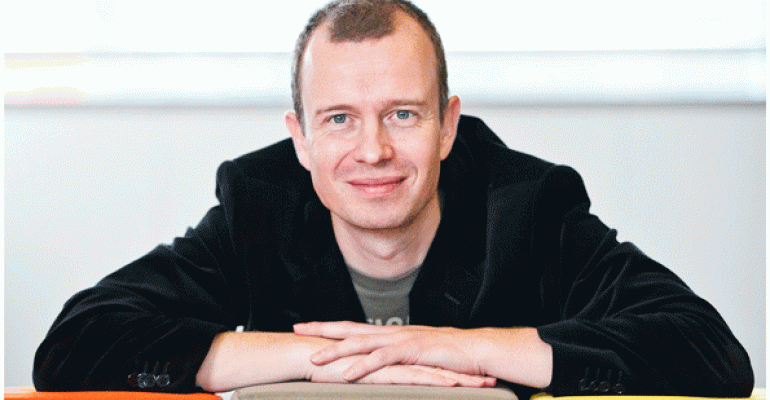Meeting managers like to hold tight control over everything to do with their events. And they want to shoehorn in every possible speaker, topic, giveaway, and networking opportunity they can think of so every attendee finds something of interest. After all, it is only logical to think that if some choice is good, more is better.
Yet research by psychologist Barry Schwartz finds that this just isn’t true. Although some choice is undoubtedly better than none, more is not always better. Too many choices overwhelm people to the point where they can’t make any choices at all.
Here are three principles you can apply to streamline your meetings so you provide more by doing less.
1. Stop doing things that don't deliver value.
For example, at most events attendees still get a goodie-bag filled with handouts and giveaways, even though most of them throw these things immediately in the trash.
Instead of spending time stuffing those bags, why not come up with a creative way to deliver extra value to your sponsors—a dinner with key speakers or the opportunity to write an article in an industry magazine, for example?
Another example is the traditional flow of an event: a few keynote speeches, followed by workshops and breakouts, ending with a reception. Consider shaking things up. A nice example of an innovative and streamlined flow is the PGM Open, a one-day conference organized for program managers in the Netherlands. There is no opening keynote; participants chose between eight options, including workshops, Pecha Kucha presentations, dialogue tables, and TED-type presentations.
Though there was a keynote in the middle of the program, it was short, with the 300 participants quickly moving into breakouts. The event ran from 2 p.m. to 8 p.m. so participants could avoid rush-hour traffic.

One thing that can help you decide what to stop doing is to create the anti-to-do list—a quit list where you note all the activities that you don't want to do anymore. Take the most important one—the one that takes the most energy—and give yourself four weeks to find ways you can stop doing it (or delegate it to someone else), and communicate the why and how of quitting this action to your team.
2. Simplify
At most conferences, attendees get a big information dump after the event (downloads of presentations, questionnaires, extra info from sponsors, results from surveys, etc.). Most people ignore these e-mails because the volume is overwhelming—they can’t decide what they might want, so they just avoid them altogether.
Instead of a smorgasbord, offer information tapas. Provide small pieces of information that are communicated over a longer period of time. For example, offer weekly insights in the form of a tweet, an image, or a cartoon to make sure the results of the event are communicated in an easily accessible way. And this is a great way to stay in touch with your participants!
Also worth simplifying are presentation formats. It’s surprising that the Pecha Kucha format hasn’t become mainstream—it’s a great way to get a lot of speakers on stage in a very short time. Speakers have 20 slides and every slide lasts for 20 seconds, so a presenter has 6 minutes and 40 seconds to get her point across. With a Pecha Kucha format, you can fit five speakers into less than 40 minutes. And you can organize a Q&A or breakouts afterwards to explore the topic in more depth.
3. Let go
A lot of events fill every minute from when people come in until they leave. Let go of overscheduling. Participants love to talk, so give them the chance to do so. Google the terms “unconference,” “world café,” “open space,” and “dialog table” in connection with meetings and you will discover formats that leave the conversation direction and topics to the participants instead of arranging everything for them. Let them share the most important insights of the conference and discuss together how they will translate those takeaways into their daily work.
Not sure what to let go of? Ask yourself:
• Is this a task that you have to do or could you delegate it?
• Is it absolutely necessary that this task be done?
• Do you need to do this task before you can accomplish something else?
• Is this task the most important thing that you should be doing?
• Is now the moment for you to be working on this task?
If you’re considering adding some new events but aren’t sure what they should be, think about trying something really radical: letting go of what your conference will be about and how it will be funded. There already are a lot of events that take place only if there's enough money collected via crowd-funding ahead of time. The organizers announce the theme and program in advance, and potential participants can register (and eventually pay in advance) if they want to come. If a minimum of participants is reached, the event will be organized. Or what about organizing an event and putting the shortlist of speakers on your Web site? Let the audience decide who they want to see on stage. It's all about letting go and letting other people (e.g., the participants) do the work.
Cyriel Kortleven is an international speaker who specializes in the topic of developing a creative mindset. His latest book, Less is Beautiful, provides examples of how “less” can help you succeed in business. Go to www.lessisbeautiful.co for more, or get in touch with Cyriel through his Web site, cyrielkortleven.com.




